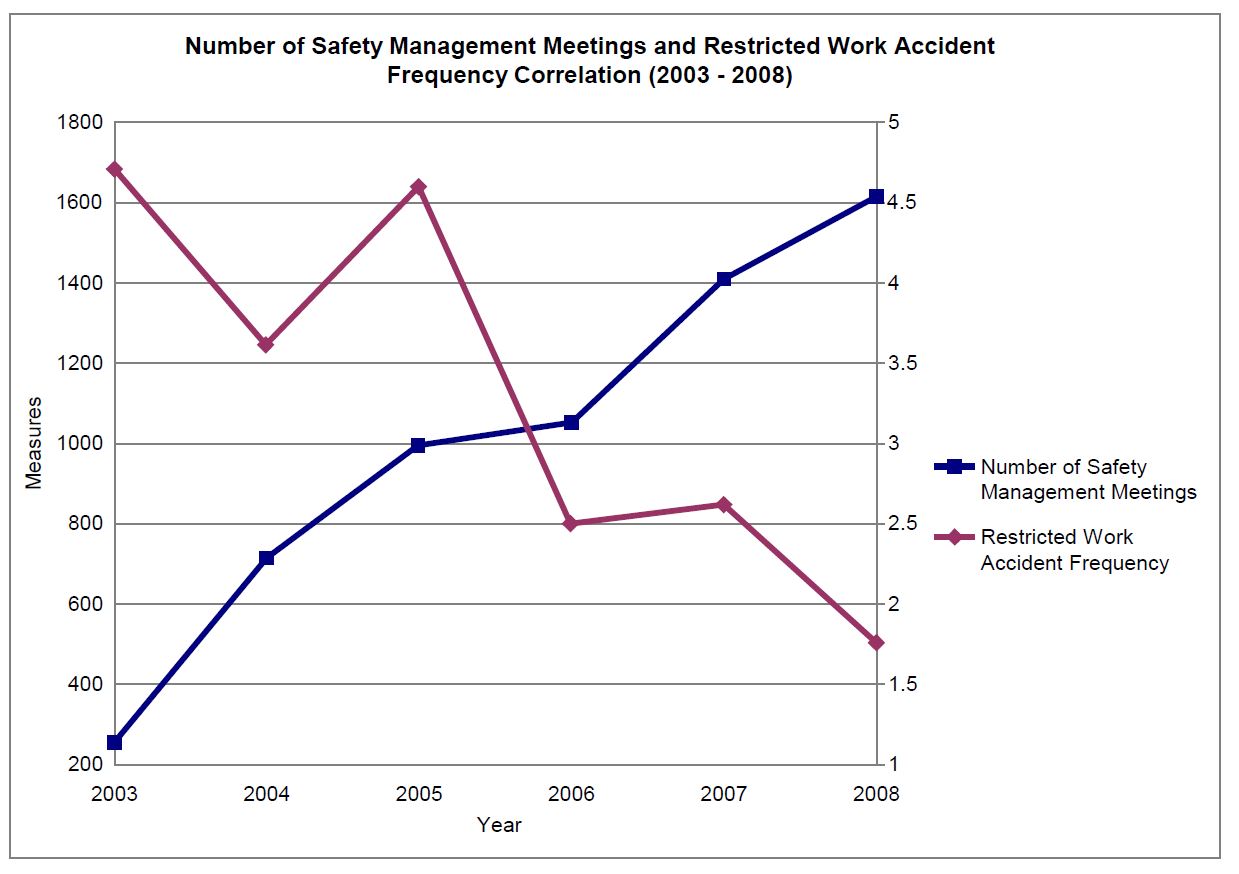Management Incentives to Know If Aviation SMS Management Is Efficient

Every person in a company should be concerned if their aviation safety management system (SMS) management is efficient and working as designed.
Management efficiency in aviation SMS implementations has significant stakes for everyone in the organization, as well as customers who use the company’s services.
Moreover, I think it goes without saying that aviation safety officers, who are both driven and naturally curious about their organization's safety performance, will be logically motivated to monitor the aviation SMS' performance.
Safety managers have two selfish reasons to improve their SMS efficiency, namely
- Nobody wants to waste their time doing something one way when there is a better way of accomplishing the same objective; and
- Inefficiency causes headaches any manager would rather avoid, especially when a manager's work will be reviewed by other managerial staff and regulatory auditors.
Related Aviation Safety Manager Articles
- What Makes a Good Aviation Safety Manager?
- Career Advice for Aspiring Aviation Safety Managers
- How to Tell If Aviation Safety Manager Is Doing Their Job
Accountable Executives Required to Monitor SMS Performance
While safety managers are naturally inclined to monitor SMS performance, we must not forget the duties and responsibilities of each accountable executive. For every aviation SMS implementation, the accountable executive will be responsible for ensuring the SMS is properly implemented and performed in all areas of the organization. This means that the accountable executive, with the help of the safety manager or team, must regularly review organizational safety performance.
Whenever substandard safety performance is detected, the accountable executive is responsible for taking the necessary steps to correct any identified concerns. As we consider this responsibility, both the safety manager and the accountable executive possess strong motivations to ensure the SMS is both:
- operating as designed; and
- operating as efficiently as possible to avoid expending unnecessary resources to manage the SMS.
Beyond this, efficiency is:
- Better for company finances;
- Better for employee safety; and
- Better for customer safety and quality experience.
The above points reference every stakeholder level of an aviation SMS, from
- front-line employees to management, and
- top executives to customers and vendors.
Metrics that expose inefficiency always work extremely well as aviation-leading indicators because inefficient management is a major precursor to risk.
Here are 3 ways to know if your aviation SMS management processes and workflows are efficient.
1 – Reported Safety Issues and Corrective Actions Closed on Time
On-time closures for reported safety issues and "Corrective Actions and Preventative Actions" (CPAs) are fantastic metrics for determining whether your aviation SMS processes are efficient, and not just in the way you are probably thinking.
Consider a couple of things. On-time closure of reported safety issues, as well as audit findings, actually has several risk management milestones that may not be immediately clear. We will elaborate a bit:
- Reported safety issue enters SMS risk management system;
- Evaluate the nature of the reported safety issue;
- Conduct a risk assessment to prioritize the safety issue;
- Set the reported safety issue's desired closure date, per your company's risk management policies in your SMS manual;
- Treat the safety issue (CPAs and any required investigations), and hopefully, identify and address the root cause; and
- Close the item when risk is mitigated to as low as reasonably practical (ALARP).
This above-simplified workflow is only an example. There may be other steps that may be required depending on the type of safety issue, severity, and nature of the underlying root cause. For example, some events may require an in-depth investigation, such as employee injuries.
Therefore, on-time issue closures are not just about actually running the reported safety issue through the risk management process, but they also include:
- How appropriate are issue closure dates? (are they unrealistically short/long?); and
- That management is on top of issues/CPAs enough to make sure requirements are on track to close on time.
This metric should be an essential leading indicator for driving management's safety performance. The best way to use this metric is:
- If management is always hitting 100%, start setting target closure dates that are sooner; and
- Once on-time closure percentages start to fall, you are reaching your capacity to close issues by the chosen target days.
You should definitely be keeping track of your target closure date standard goals over time. This way, you are able to see on-time closure percentages in reference to target closure goals over time. You can take the same concept and apply it to things like aviation SMS implementation, training, etc. What percentage of items in your program are being done on time?
Related Articles on Monitoring Safety Performance
- How to Monitor Aviation SMS Performance - Safety Chart
- How to Use Safety Charts to Focus Hazard Risk Management Efforts - Aviation SMS
- SMS Chart: Where to Focus Hazard Identification Training & Risk Mitigation
2 – Frequency of Aviation Safety Meetings

Safety meetings have an extremely strong correlation to safety performance and the effectiveness of your existing safety culture. In fact, they have an inverse relationship. As safety meetings become more frequent, high-risk safety incidents become equally less frequent. Just consider the chart at the right.
Aviation safety meetings provide several useful functions for efficiency:
- Allow aviation safety officers and relevant managers to stay on the same page and remain aware of current safety concerns;
- Cause less time to be wasted due to lack of communication, clarification, repeat safety occurrences, etc.; and
- Prioritize items that need to be mitigated.
But why look at the frequency of safety meetings, rather than just an overall number? Both total number and frequency ultimately measure the same number: the number of safety meetings in a certain amount of time. However, frequency takes this a step further by putting that number in context.
In other words, 32 safety meetings in 5 months do not provide the clarity that 1 safety meeting per 4.6 days. The second metric allows you to immediately establish that safety meetings are being held once per week. The first metric does not. Safety meeting frequency is another essential aviation leading indicator and is also a very common key performance indicator (KPI) or safety performance indicator (SPI) for most aviation service providers with more than 100 employees.
3 – Repeating the Same Work
Repeating the same tasks is a drag on your efficiency, and they indicate deeper underlying causes. These causes can be diverse:
- Poor communication causes repeat tasks;
- Inability to accurately determine root cause(s) of repeated safety events;
- Ineffective safety risk management (SRM) processes;
- You are reaching the capacity of current business solutions (i.e., spreadsheets) to help you perform routine risk management tasks; or
- Lack of automation, organization, or responsibility of yourself or other management is causing you to have to redo a task.
Note that “repeating” in this case is not necessarily repeating a process on different items, such as submitting the same safety reports multiple times. Repeating should be taken as “redoing,” such as filling out the same safety report twice because of a problem in filling it out the first time.
It might not be clear whether or not repeating work is currently an issue for you, because chances are you haven’t been paying close attention to it. Repeating tasks is a dead giveaway of inefficiency. The best way to turn this into a metric you can monitor is to:
- Keep a slip of paper or spreadsheet,
- Make a tick mark every time you find yourself repeating a task, and
- After a defined number of times, such as once per week, note the total number of repetitive tasks.
After several months you will have some concrete data to work with, establish trends, and make decisions.
Related Articles on Aviation SMS Trending Charts
- How to Use Trending Charts in Aviation SMS
- How to Prepare Data for Trend Analysis in Aviation SMS
- Six Steps How to Perform Trend Analysis in Aviation SMS
Final Thought: Be Prepared to Be Unhappy
Here’s the cold hard truth: For some time I worked with businesses creating operational workflows. The fact is that most operations are unpleasantly surprised by how inefficient they are. This is because we all quickly adjust to our environment, and it’s hard to step away and be objective, especially when you have so many pressing concerns.
My bet is that safety management teams who are brave enough to take a serious look at their safety performance efficiency will find areas of glaring inefficiency in their aviation SMS risk management processes. I highly recommend:
- If you have a relatively new aviation SMS implementation, establish efficiency monitoring right away (it only gets more difficult to change habits as the SMS matures); and
- If you have a mature SMS implementation, it’s well worth your time, money, and future headaches to sniff out inefficiency.
Workflows are at the heart of quality aviation SMS management efficiency. Learn how to improve your workflows with these free workflow diagrams:
Aviation SMS Databases Improve Efficiency
Aviation service providers who are manually attempting to manage all SMS documentation requirements are in for a rude awakening. There is an expectation that you will be collecting and storing relevant SMS safety data for at least five years.
How do you manage all this data?
- Your audits?
- Training records?
- Reported safety events?
Managing SMS documentation using spreadsheets or tools that were not designed specifically to address SMS documentation requirements is a problem waiting to happen. The best and most cost-effective way to mitigate this risk is to adopt a low-cost, commercially available SMS database that has a very good reputation.
SMS Pro has been in production around the world for over a dozen years. SMS Pro has been considered the "Cadillac" of SMS database solutions. To see SMS Pro in action, please watch these short demo videos.
Last updated March 2025.








